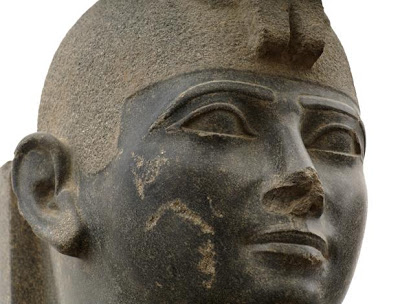Lost In Shadows, Egypt History
In one of the largest Nubian Egypt ruled the eighth and seventh centuries BC, the so-called Pharaonic Ta Hakka restored the ancient temples splendid along the Nile, but also repel the invasion of North Asia people said. Eventually, the Assyrian king's army drove him to his Nubian home, where he died in 664 BC.
After capturing the city along the Nile in 730 BC, the forces led by King Nubia of the Nubia hit the Great Wall in Memphis with a fire arrow. Pie simulates the powerful pharaohs of Ramses II (the statue) and claims to be the legal ruler of Egypt. His victory over the leaders of the north will unite all of Egypt for three-quarters of a century under the Nubian rule.
The ranks of the Nubian archers advanced forward in a 20-inch wooden model in Assiut, the mausoleum of the 11th-century ruler, Mush-ti. This period was around 2000 BC and was one of the unrest in Egypt, where many local chiefs recruited Nubians and other foreigners to join their army. The ruins of the columns, the Karnak Temple and the Temple of Amun added one of the returns to its full height, Taha Ka King represents the most sacred place in ancient Egypt porch entrance.
In the capital of Nubian Sudan, a statue of the Nubian king was discovered up to ten feet. It was recently regrouped when the Egyptian king invaded the second Semi-tech around 593 BC. At the height of his power, the king led his property during the crowd during the festival of Jabal al-Barkal, the temple in Nubia, its glittering dome. In a sacred boat with Amun statues, Taha Ka priest dressed in leopard skin, in addition to the double prayer, claiming it was Nubia and Egypt, the rulers.
Queen Kurt, wearing her hair in her coffin, is thought to be one of the Nubian's sent from the diplomatic marriage with Pharaoh Amenhotep II in the 11th century aristocratic women. In a tulip, Mahabharata established a temple dedicated to the goddess Mott. Part of Amun is the magnificent architectural activity of the entire empire, from northern Egypt to Nubia. The lion that swallowed the Nubian was made during the 19th century and can be a garnish handle. It symbolizes the brave rulers of Egypt who occupied the Nubia's to protect his country and avoid chaos.
Nubia is the main source of gold in ancient Egypt. In Thebes, the tomb of the governor of Tutankhamen showed a Nubian royal show of the Nubian representative in Huey, where he praised their domination. The master craftsman in the Nubians made masterpieces such as the pendant of the goddess Isis from the tomb of a Nubian Nubian king. After centuries of losing control of Nubia Egypt, continued to follow the traditions of its neighbors, marking the royal tombs with pyramids, as repaired in Meroë. Today, Sudan has more pyramids than Egypt.
After capturing the city along the Nile in 730 BC, the forces led by King Nubia of the Nubia hit the Great Wall in Memphis with a fire arrow. Pie simulates the powerful pharaohs of Ramses II (the statue) and claims to be the legal ruler of Egypt. His victory over the leaders of the north will unite all of Egypt for three-quarters of a century under the Nubian rule.
The ranks of the Nubian archers advanced forward in a 20-inch wooden model in Assiut, the mausoleum of the 11th-century ruler, Mush-ti. This period was around 2000 BC and was one of the unrest in Egypt, where many local chiefs recruited Nubians and other foreigners to join their army. The ruins of the columns, the Karnak Temple and the Temple of Amun added one of the returns to its full height, Taha Ka King represents the most sacred place in ancient Egypt porch entrance.
In the capital of Nubian Sudan, a statue of the Nubian king was discovered up to ten feet. It was recently regrouped when the Egyptian king invaded the second Semi-tech around 593 BC. At the height of his power, the king led his property during the crowd during the festival of Jabal al-Barkal, the temple in Nubia, its glittering dome. In a sacred boat with Amun statues, Taha Ka priest dressed in leopard skin, in addition to the double prayer, claiming it was Nubia and Egypt, the rulers.
Queen Kurt, wearing her hair in her coffin, is thought to be one of the Nubian's sent from the diplomatic marriage with Pharaoh Amenhotep II in the 11th century aristocratic women. In a tulip, Mahabharata established a temple dedicated to the goddess Mott. Part of Amun is the magnificent architectural activity of the entire empire, from northern Egypt to Nubia. The lion that swallowed the Nubian was made during the 19th century and can be a garnish handle. It symbolizes the brave rulers of Egypt who occupied the Nubia's to protect his country and avoid chaos.
Nubia is the main source of gold in ancient Egypt. In Thebes, the tomb of the governor of Tutankhamen showed a Nubian royal show of the Nubian representative in Huey, where he praised their domination. The master craftsman in the Nubians made masterpieces such as the pendant of the goddess Isis from the tomb of a Nubian Nubian king. After centuries of losing control of Nubia Egypt, continued to follow the traditions of its neighbors, marking the royal tombs with pyramids, as repaired in Meroë. Today, Sudan has more pyramids than Egypt.













